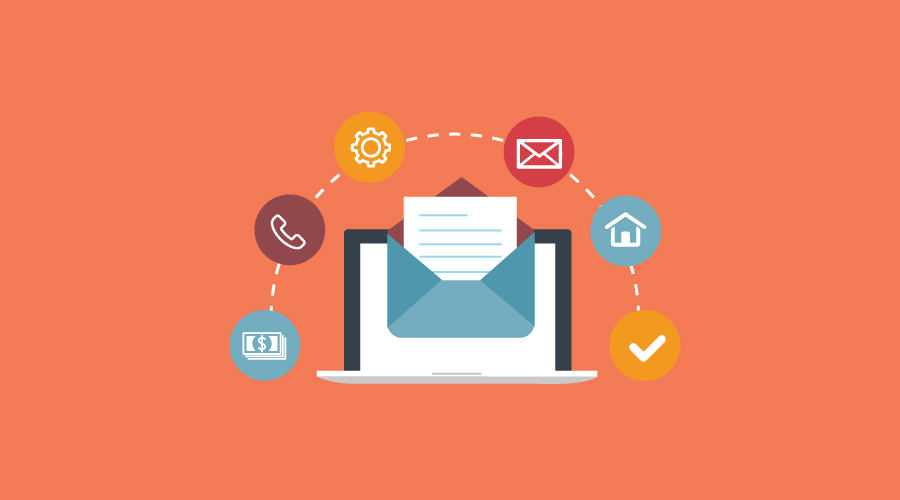From one person to another
How to grow an audience from scratch
Winter wardrobe planner
A relationship email is an email that helps to foster a relationship between the sender and the recipient. This type of email can be used for both personal and business purposes. The key to writing a successful relationship email is to focus on the needs and interests of the recipient, rather than your own.
By doing this, you will be able to create a strong connection with the recipient that can last long after the initial contact.
Click Here to Start Work from Home Jobs
Any business that wants to be successful needs to focus on building relationships with their customers. And one of the best ways to do this is through email marketing. A relationship email is an email that is sent with the sole purpose of building a relationship with the recipient.
It’s not about selling anything, but rather about creating a connection. The best relationship emails are personalized, relevant, and interesting. They offer value to the reader and make them feel special.
Building relationships with your customers is essential to your success. And sending relationship emails is one of the best ways to do it.
Relationship email | All Your Email Marketing Questions Answered By The Genius Marketer
What is a Relationship Email Issa?
A relationship email is an email that you send to someone with whom you have a close relationship. It can be a family member, friend, or business associate. The content of the email will be personal in nature and may include news about your life, thoughts on current events, or anything else that you would share with someone with whom you have a close relationship.
How Do You Build Relationships in Email?
Email is a great way to build relationships with customers, prospects, and vendors. To do this effectively, you need to understand how email works and how people use it. Email is a two-way communication tool, so building relationships through email requires back-and-forth communication.
Email also allows you to be more personal than other channels like social media or your website. To build relationships through email, start by segmenting your list into different groups based on interests or demographics. This will allow you to send more targeted emails that are relevant to the recipient.
You can also add a personal touch by including the recipient’s name in the subject line or body of the email. Finally, make sure you’re responsive when someone replies to your email – thank them for their feedback and continue the conversation.
What are the 4 Types of Marketing Emails?
There are four types of marketing emails: announcements, information, invitations, and follow-ups. Announcement emails let your customers know about important news or updates related to your business. Information emails keep your customers up-to-date on changes or developments in your industry that might affect them.
Invitation emails invite your customers to participate in an event or take advantage of a special offer. Follow-up emails thank your customers for their business and encourage them to continue working with you in the future.
What are the 3 Types of Emails?
There are three types of email: transactional, marketing, and personal. Transactional emails are automated messages that are sent to customers after they take a specific action. For example, a customer might receive a transactional email after making a purchase, signing up for a newsletter, or requesting information from customer service.
Marketing emails are sent by businesses in an attempt to promote their products or services. These messages can include special offers, coupons, announcements, or general information about the company. Personal emails are messages sent between individuals for personal reasons.
This could include family updates, invitations, thank-yous, or other correspondence.
Click Here to Start Work from Home Jobs

Credit: everything-pr.com
Long-Term Business Relationship Email
A long-term business relationship is built on trust, communication, and mutual respect. It’s not always easy to maintain these things, but it’s worth it to have a partner you can rely on. Here are a few tips for keeping your long-term business relationships strong:
1. Communicate regularly. Whether you’re catching up on a project or just checking in, regular communication is key to maintaining a good relationship. Make sure you’re clear and concise when you communicate, and listen carefully to what your partner has to say.
2. Be responsive. If your partner needs something from you, make sure you get back to them as soon as possible. They’ll appreciate the effort, and it will help keep the lines of communication open.
3. Respect each other’s time and space. Everyone has different needs when it comes to how much contact they want with their business partners. Some people prefer daily check-ins while others are happy with once a week or even less frequent meetings.
As long as you’re respecting each other’s time constraints, things should run smoothly. 4. Keep your promises. This one is important!
If you say you’re going to do something, make sure you follow through on your word.
Relationship Building Email Templates
In today’s business world, the importance of building relationships cannot be understated. Whether you are trying to build relationships with potential customers or clients, or foster better working relationships with colleagues, taking the time to connect with people is essential. One great way to build relationships is through email.
Sending thoughtful, personalized emails can show people that you value them and want to connect with them. But coming up with original ideas for emails can be tough! That’s why we’ve put together a list of relationship-building email templates that you can use in your own business.
1) The “Thank You” Email A simple “thank you” goes a long way in building relationships. Whether someone has done something nice for you, helped you out, or simply been a great customer, sending a thank you email shows that you appreciate them.
This type of email doesn’t have to be long or complicated – just a few sentences expressing your gratitude will do the trick. 2) The “Update” Email An update email is a great way to keep people in the loop about what’s going on in your life or business.
This could include sharing news about new products or services, upcoming events, or anything else that might be of interest to your contacts. Keeping people updated helps to foster stronger relationships by showing that you value their interest and want to keep them informed. 3) The “Introductory” Email
If you’re looking to build relationships with new contacts, an introductory email is a great way to start things off on the right foot. In this type of email, it’s important to introduce yourself and explain how you know the person (if applicable). You can also briefly mention what it is that you do and why they might be interested in hearing from you.
Keep things short and sweet – nobody likes being bombarded with too much information at once! 4) The “Testimonial” Email A testimonialemail is a powerful tool for building relationships because it allows you to share positive feedback from others who have worked with you before. If someone has had a good experience working with you or using your products/services, ask if they would be willing & provide permissionto share their testimonial publicly via email . Not only does this help show potential new clients what others think of your work – it also helps build trust between both parties involved . 5) The “Catch Up” Email
Types of Email Marketing
Email marketing is a great way to connect with customers and promote your business. But before you start sending out emails, you need to understand the different types of email marketing. There are four main types of email marketing: transactional, relationship, promotional, and triggered.
Transactional emails are sent after a customer completes an action, like making a purchase or signing up for a newsletter. They typically include information about the transaction, like a receipt or confirmation message. Relationship emails are sent to nurture the relationship between the customer and the company.
They might include things like educational content, special offers, or updates about new products and services. Promotional emails are sent to promote specific products or services. They might include discounts, coupons, or other incentives to encourage customers to buy something from your company.
Triggered emails are sent based on customer behavior, like abandoned cart messages or birthday greetings. These messages can be highly personalized and effective at driving conversions.
Click Here to Start Work from Home Jobs
Conclusion
This blog post covers the topic of email marketing and how to create a relationship with your subscribers. The author starts by explaining that the key to any successful email marketing campaign is to build a relationship with your subscribers. He goes on to say that this can be done by providing valuable content, engaging with them on a personal level, and making it easy for them to unsubscribe if they so choose.
The author then provides some tips on how to create an effective email marketing campaign, including segmenting your list, using triggers, and creating a sense of urgency.




